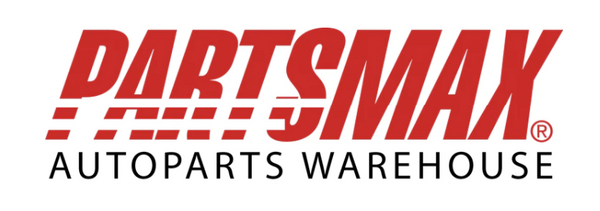You've spent thousands upgrading your vehicle with custom wheels, a performance exhaust, or a premium sound system. But when an accident strikes, will your insurance company actually cover these aftermarket parts and insurance claims? The reality is that most standard auto insurance policies offer limited protection for vehicle modifications, leaving many drivers facing unexpected out-of-pocket expenses when they need coverage most.
Understanding how your insurance policy handles custom parts, modified vehicles, and specialty equipment can save you from costly surprises and ensure your automotive investments receive proper protection. Let's explore what your coverage actually includes and how to navigate the claims process successfully.
What Are Aftermarket Parts and Why Insurance Companies Care
Aftermarket parts are any components added to or replacing original equipment after vehicle purchase, including performance modifications, aesthetic upgrades, and functional accessories. Insurance companies view these modifications differently because they alter the vehicle's original specifications, potentially affecting safety, value, and replacement costs.
Common aftermarket modifications include performance enhancements like cold air intakes and turbo kits, aesthetic upgrades such as custom wheels and body kits, premium audio systems, and functional additions like roof racks or specialized lighting. Each category presents unique challenges for insurance coverage and claims processing.
Insurance providers approach modified vehicles cautiously because aftermarket parts can increase both the vehicle's value and its risk profile. Custom modifications may make the car more attractive to thieves, harder to repair, or more expensive to replace with equivalent parts. Additionally, some performance modifications might increase accident risk, while others could actually improve safety.
How Most Car Insurance Policies Handle Aftermarket Parts
Standard comprehensive and collision coverage typically includes aftermarket parts up to a predetermined limit, usually between $1,000 and $3,000. This coverage often applies only to permanently installed equipment and may exclude certain types of modifications entirely.
Most insurance policies distinguish between original equipment manufacturer (OEM) components and aftermarket additions. While your base vehicle receives full coverage according to its actual cash value, custom parts face separate limitations and requirements. The policy language around "original equipment" often creates confusion for vehicle owners who assume comprehensive coverage protects everything.
State regulations also influence how insurers handle modified vehicles. Some states require minimum coverage for aftermarket parts, while others allow carriers complete discretion in setting coverage limits and exclusions. Understanding your state's specific requirements helps you evaluate whether your current policy provides adequate protection.

Does Insurance Cover Aftermarket Parts After an Accident?
Yes, insurance can cover aftermarket parts, but coverage depends on your specific policy terms, the type of modifications, and whether you've properly declared them to your insurer. Standard policies typically provide limited coverage, while specialized endorsements offer more comprehensive protection.
Factory-installed options and dealer-added accessories generally receive better coverage than owner-installed modifications. Safety-related additions like anti-theft devices, backup cameras, or enhanced lighting systems often qualify for standard coverage because they reduce risk rather than increase it.
However, several common exclusions can deny aftermarket parts claims. Racing modifications, purely cosmetic upgrades without functional value, and DIY installations lacking professional documentation frequently fall outside standard coverage. Performance modifications that increase the vehicle's power or alter its handling characteristics may void coverage entirely or require special disclosure.
When processing claims, insurance companies calculate aftermarket parts values using actual cash value principles, applying depreciation based on age, condition, and market availability. Proper documentation becomes crucial for proving both the existence and value of your modifications.
Types of Coverage Available for Aftermarket Car Parts
Custom parts and equipment (CPE) coverage and agreed value policies provide enhanced protection for modified vehicles beyond standard policy limits. These specialized coverages address the gaps in traditional auto insurance for vehicle enthusiasts.
Equipment coverage endorsements allow you to increase coverage limits specifically for aftermarket parts, typically ranging from $5,000 to $50,000 in additional protection. These endorsements usually require detailed documentation of modifications and their values, but they provide much more comprehensive coverage than standard policies.
For heavily modified or collectible vehicles, agreed value policies offer the best protection. Instead of actual cash value calculations, these policies establish predetermined payouts that account for modifications and customization. Specialty insurers often provide these policies specifically for modified classics, show cars, and high-performance vehicles.
Gap insurance interactions with aftermarket parts create additional considerations. While gap coverage helps with loan balances exceeding vehicle value, it typically doesn't account for aftermarket modifications unless specifically included in the policy terms.
Filing Insurance Claims for Aftermarket Parts Damage
Document all modifications with purchase receipts, installation records, and professional appraisals before any damage occurs to ensure smooth claims processing. Proper documentation forms the foundation of successful aftermarket parts claims.
Essential documentation includes original purchase receipts showing part costs, professional installation invoices, detailed photographs of modifications, and current appraisal documents for valuable custom work. Maintaining organized records of maintenance and upgrades demonstrates responsible ownership and helps justify replacement values.
The claims process for modified vehicles often involves additional steps beyond standard procedures. Insurance adjusters may require specialized knowledge to properly evaluate custom parts, potentially extending claim timelines. Working with repair facilities experienced in modified vehicles ensures proper assessment and quality repairs.
Common claim denials result from insufficient documentation, undisclosed modifications, or exceeding policy coverage limits. Avoiding these issues requires proactive communication with your insurer and thorough record-keeping throughout your vehicle's modification journey.
Maximizing Your Aftermarket Parts Insurance Coverage
Professional documentation, clear communication with your insurance agent, and regular policy reviews ensure optimal protection for your modified vehicle. Taking proactive steps protects your investment before problems arise.
Create a comprehensive modification inventory including detailed descriptions, purchase dates, costs, and current values. Professional photography from multiple angles documents the quality and extent of your customization work. Update this inventory regularly as you add new modifications or as parts appreciate or depreciate in value.
Working closely with knowledgeable insurance agents helps you understand coverage options and limitations. Ask specific questions about modification coverage, policy limits, and exclusions before purchasing coverage. Annual policy reviews ensure your protection keeps pace with ongoing modifications and changing vehicle values.
Consider upgrading your coverage when modification values exceed standard policy limits, when adding high-value custom work, or when transitioning from daily driver to show car use. The cost of enhanced coverage often proves minimal compared to potential out-of-pocket expenses following an uninsured loss.
Cost Considerations and Coverage Options
Aftermarket modifications typically increase insurance premiums by 10-25%, depending on the type and extent of customization, but enhanced coverage provides valuable protection for significant investments. The premium increase often represents excellent value compared to replacement costs.
Safety-oriented modifications like backup cameras, enhanced lighting, or anti-theft systems may actually reduce premiums by lowering risk. Performance modifications generally increase costs more than aesthetic upgrades, while some extreme modifications might make standard coverage unavailable entirely.
Comparing coverage options requires evaluating both cost and protection levels. Specialty insurers focusing on modified vehicles often provide better value than traditional carriers, adding endorsements to standard policies. Consider factors like agreed value options, repair facility networks, and claims handling experience with custom vehicles.
Budget-friendly protection strategies include prioritizing coverage for the most expensive modifications, maintaining detailed documentation to reduce appraisal costs, and considering seasonal coverage adjustments for stored vehicles. Self-insuring smaller modifications while properly covering major custom work provides cost-effective protection.
Expert Tips for Aftermarket Parts and Insurance
Consult your insurance agent before making significant modifications and choose upgrades that enhance rather than compromise your coverage options. Prevention beats dealing with coverage gaps after damage occurs.
Professional installation and documentation provide crucial evidence for insurance claims. Keep all receipts, take before-and-after photos, and obtain certificates from qualified installers. Avoid modifications that specifically void coverage, such as racing equipment or alterations that remove safety features.
Working with insurance-approved repair facilities familiar with modified vehicles ensures quality repairs and smoother claims processing. Establish relationships with reputable shops before you need them, and verify their insurance industry credentials and experience with your type of modifications.
Red flags that may compromise coverage include using vehicles for racing or track events, improper installation or maintenance, and failing to disclose material changes to your insurer. Transparency with your insurance company prevents claim denials and policy cancellations.
Key Takeaways
- Standard auto insurance policies typically limit aftermarket parts coverage to $1,000-$3,000
- Custom parts and equipment endorsements provide enhanced protection for modified vehicles
- Proper documentation, including receipts, photos, and appraisals, is essential for successful claims
- Professional installation and disclosure to your insurer prevent common coverage exclusions
- Specialty insurers often provide better coverage options for heavily modified vehicles
- Safety-oriented modifications may reduce premiums, while performance upgrades typically increase costs
- Regular policy reviews ensure coverage keeps pace with ongoing modifications
- Agreed value policies offer the best protection for high-value custom vehicles
Protecting Your Investment
Understanding aftermarket parts and insurance claims empowers you to make informed decisions about both vehicle modifications and insurance coverage. While standard policies provide basic protection, serious enthusiasts benefit significantly from enhanced coverage options that properly value their automotive investments.
Don't wait until after an accident to discover coverage gaps in your policy. Review your current coverage today, document your existing modifications properly, and consider upgrading to specialized coverage that matches your vehicle's true value. Your custom ride deserves protection that reflects the time, money, and passion you've invested in making it uniquely yours.

